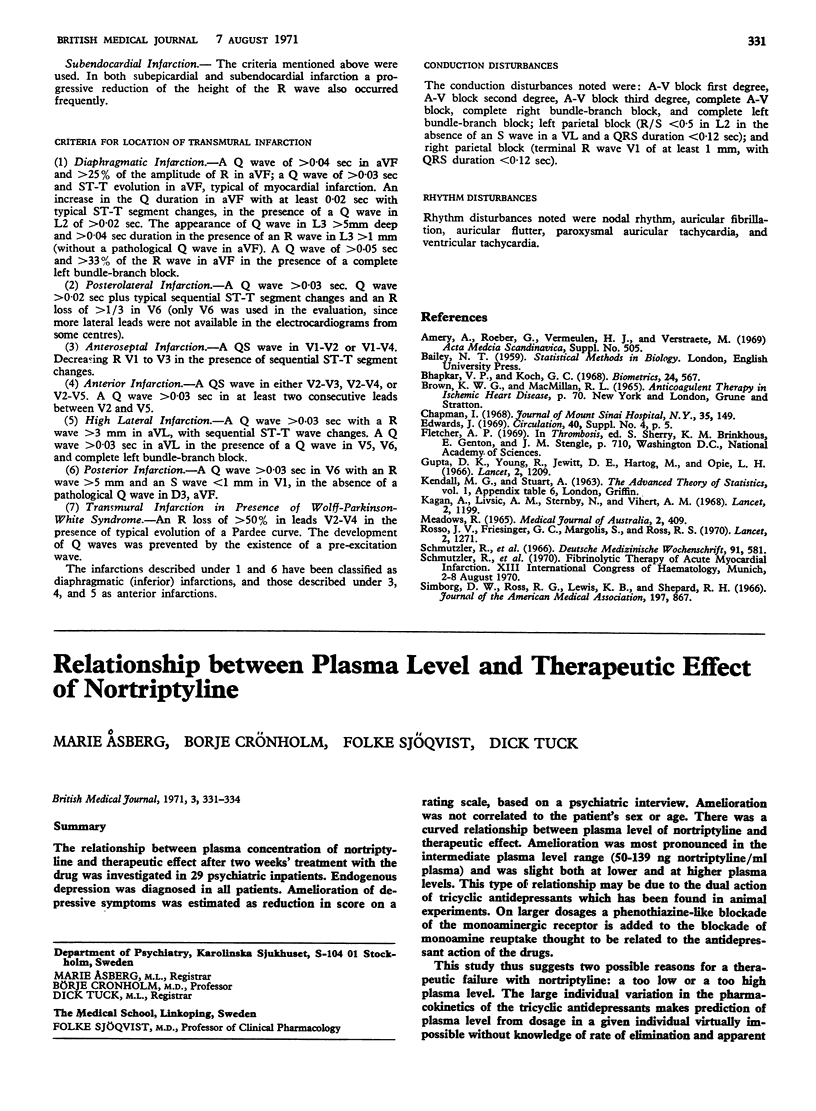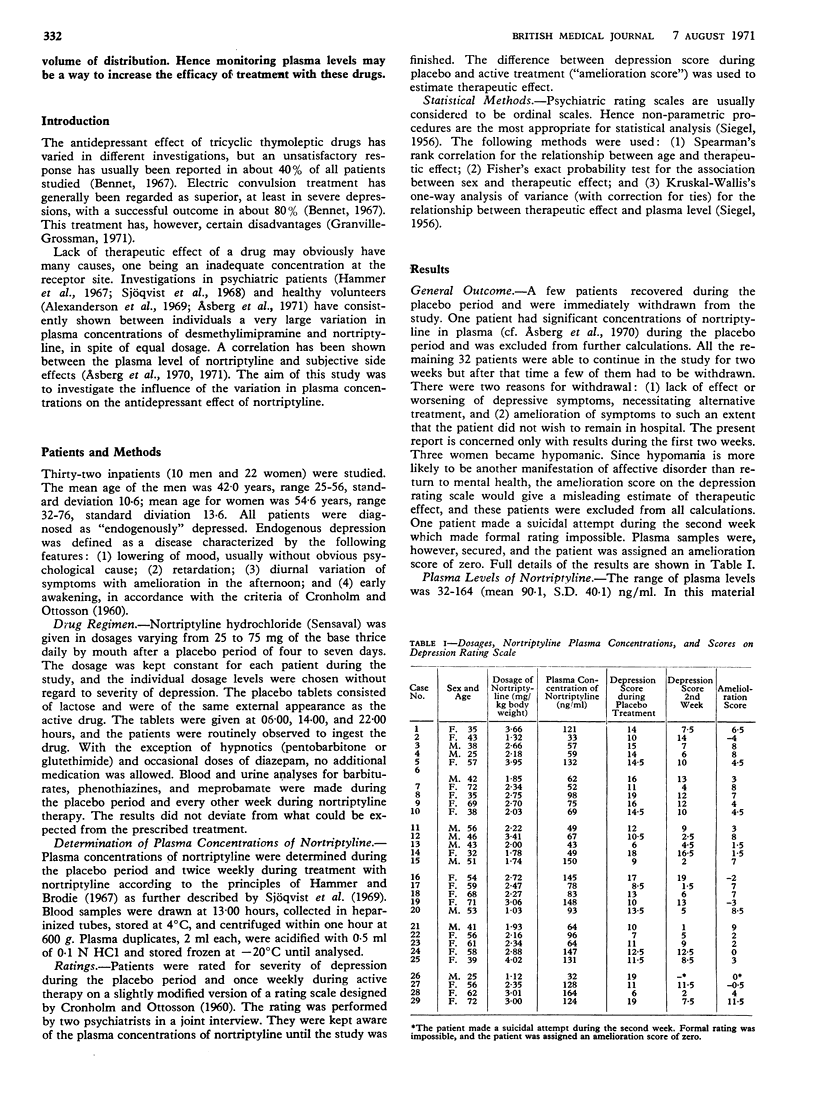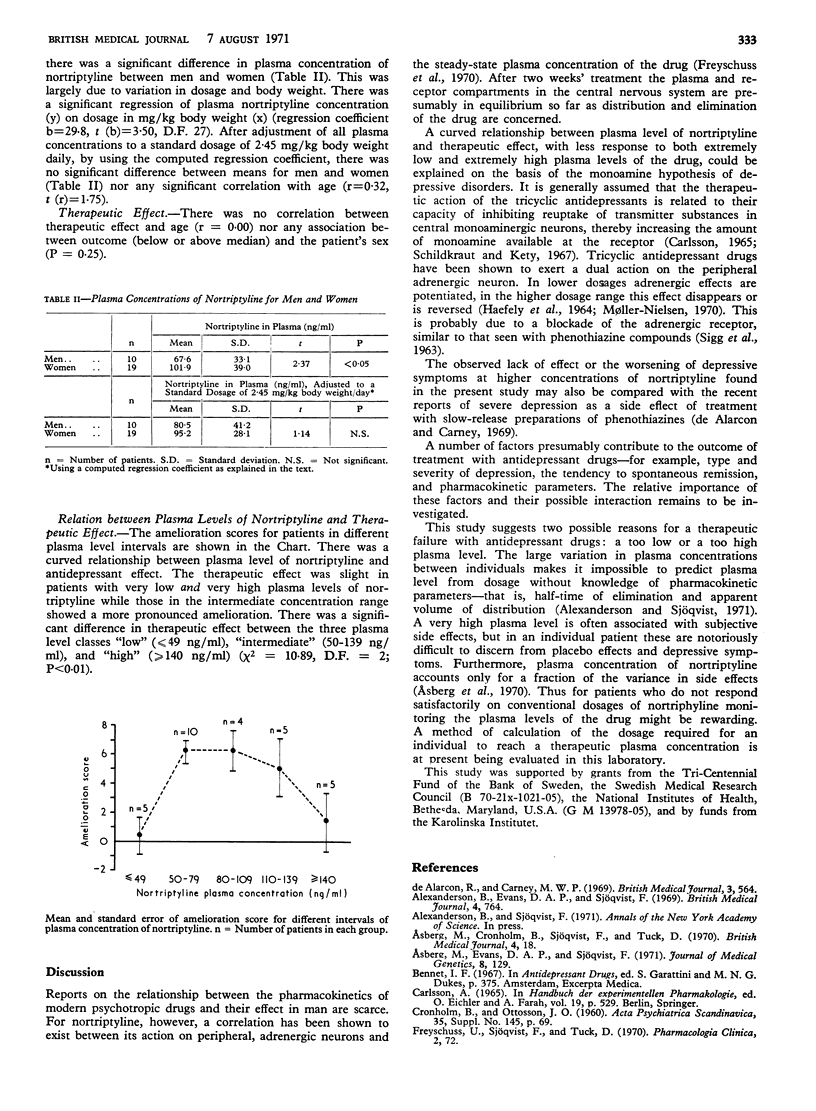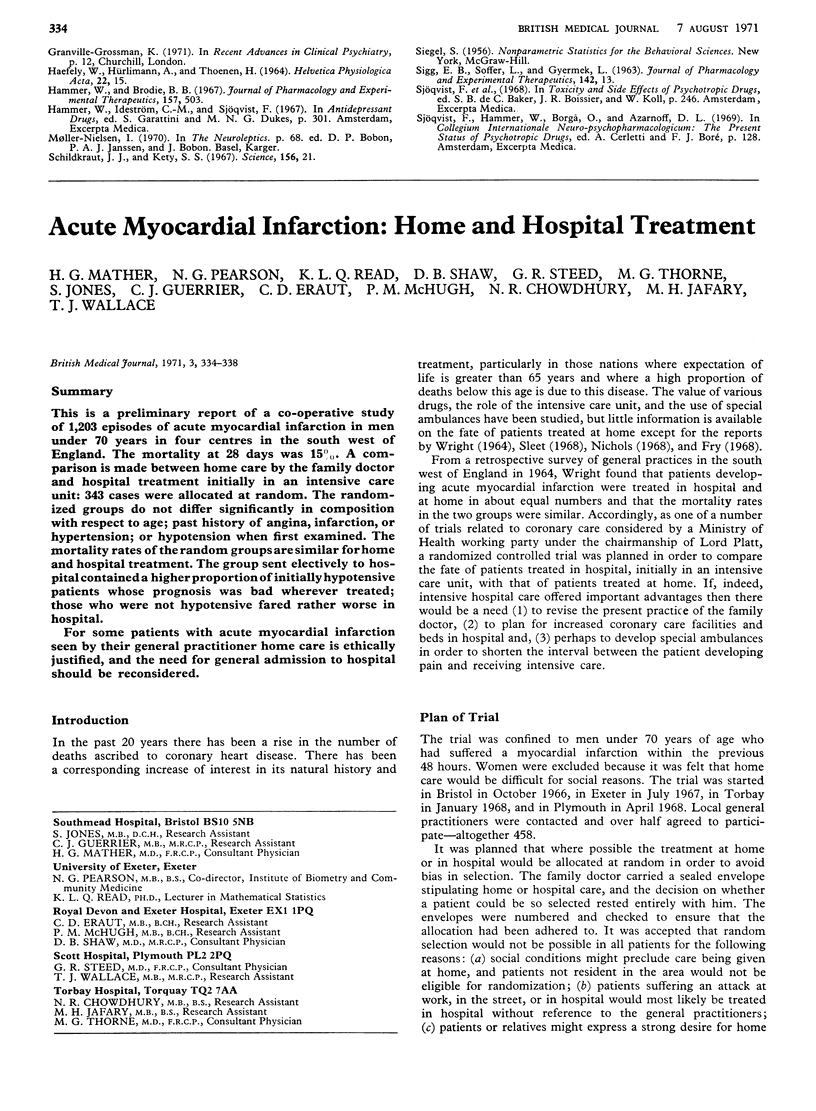Abstract
The relationship between plasma concentration of nortriptyline and therapeutic effect after two weeks' treatment with the drug was investigated in 29 psychiatric inpatients. Endogenous depression was diagnosed in all patients. Amelioration of depressive symptoms was estimated as reduction in score on a rating scale, based on a psychiatric interview. Amelioration was not correlated to the patient's sex or age. There was a curved relationship between plasma level of nortriptyline and therapeutic effect. Amelioration was most pronounced in the intermediate plasma level range (50-139 ng nortriptyline/ml plasma) and was slight both at lower and at higher plasma levels. This type of relationship may be due to the dual action of tricyclic antidepressants which has been found in animal experiments. On larger dosages a phenothiazine-like blockade of the monoaminergic receptor is added to the blockade of monoamine reuptake thought to be related to the antidepressant action of the drugs.
This study thus suggests two possible reasons for a therapeutic failure with nortriptyline: a too low or a too high plasma level. The large individual variation in the pharmacokinetics of the tricyclic antidepressants makes prediction of plasma level from dosage in a given individual virtually impossible without knowledge of rate of elimination and apparent volume of distribution. Hence monitoring plasma levels may be a way to increase the efficacy of treatment with these drugs.
Full text
PDF



Selected References
These references are in PubMed. This may not be the complete list of references from this article.
- Alexanderson B., Evans D. A., Sjöqvist F. Steady-state plasma levels of nortriptyline in twins: influence of genetic factors and drug therapy. Br Med J. 1969 Dec 27;4(5686):764–768. doi: 10.1136/bmj.4.5686.764. [DOI] [PMC free article] [PubMed] [Google Scholar]
- Schildkraut J. J., Kety S. S. Biogenic amines and emotion. Science. 1967 Apr 7;156(3771):21–37. doi: 10.1126/science.156.3771.21. [DOI] [PubMed] [Google Scholar]


